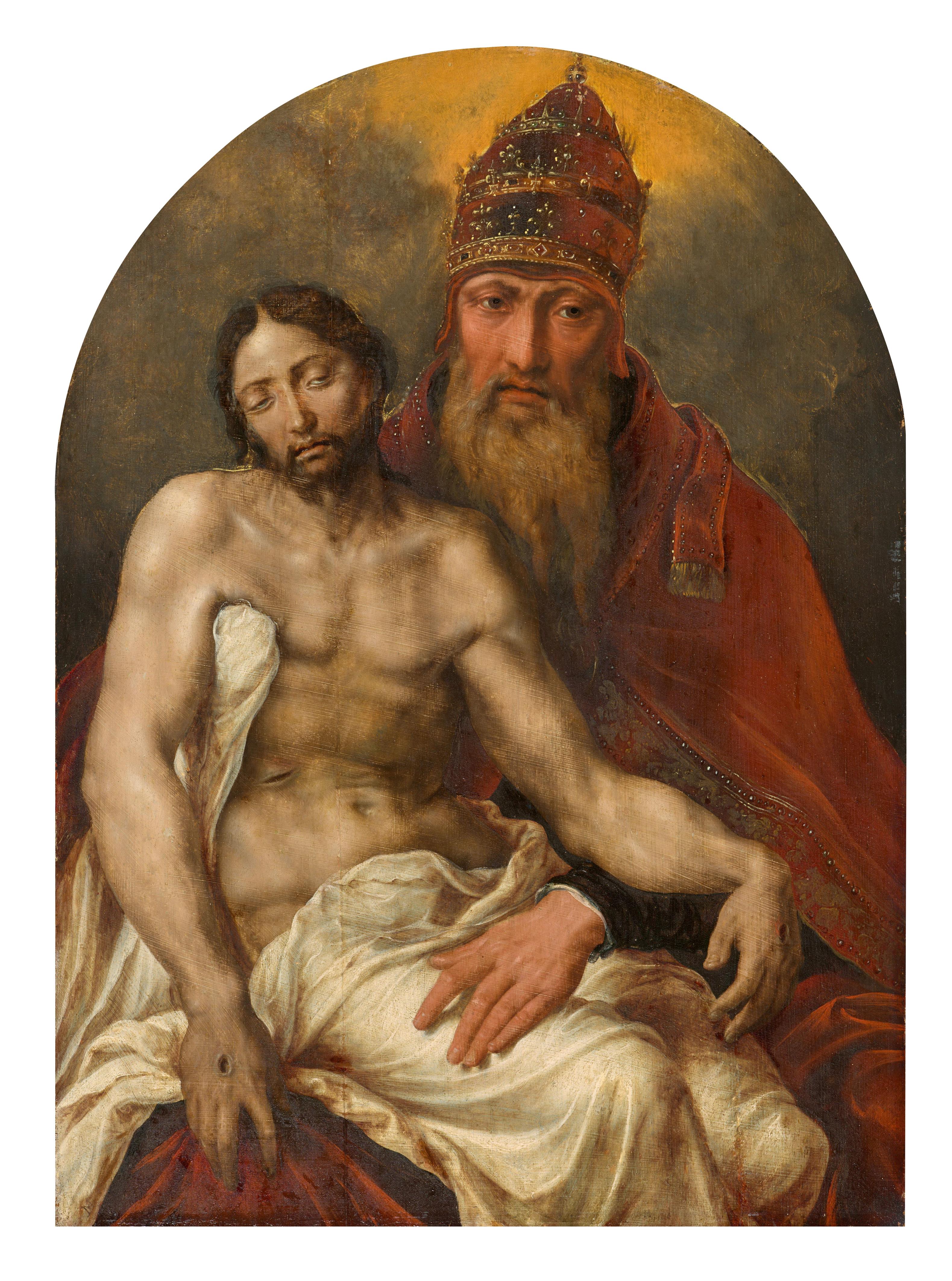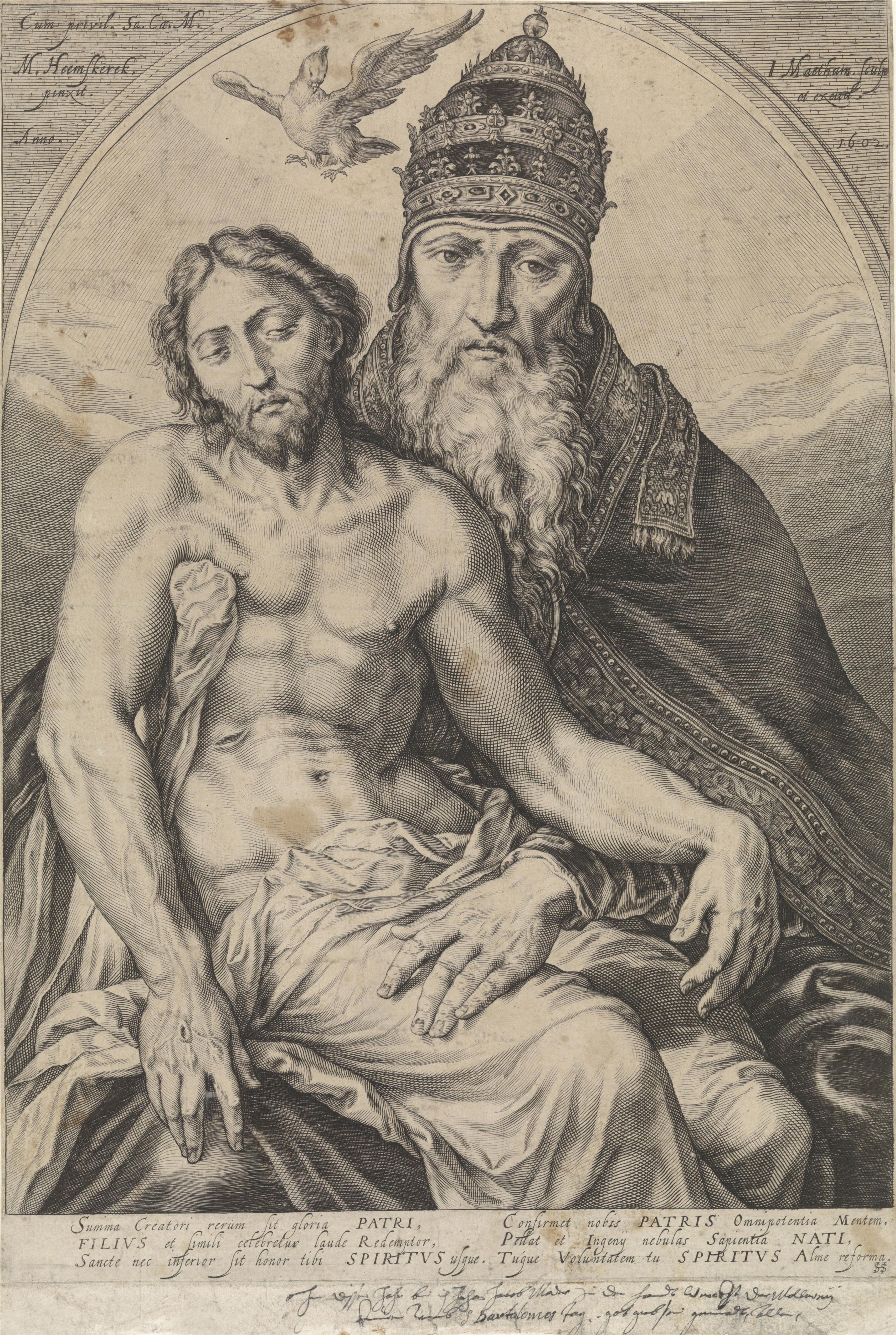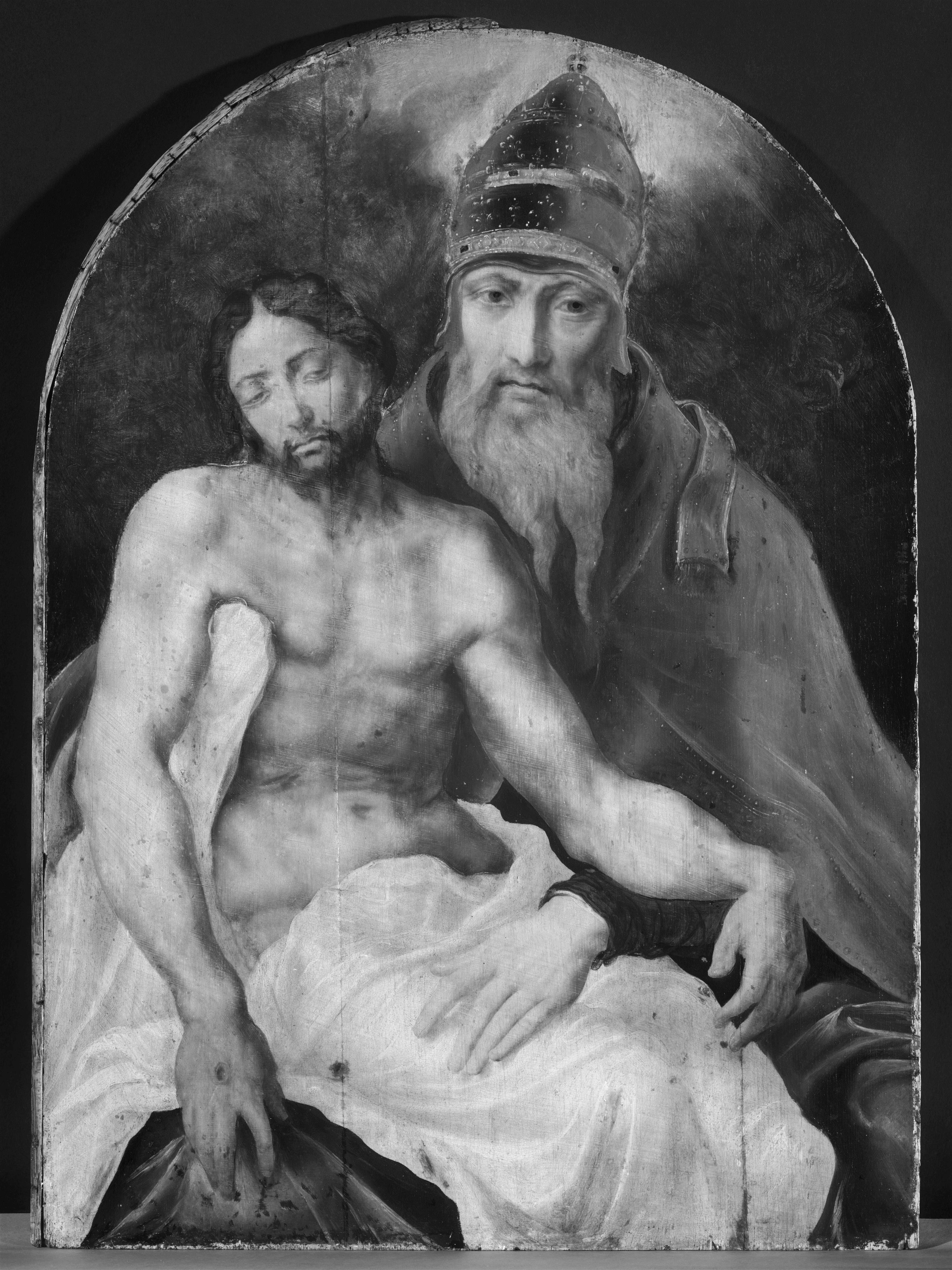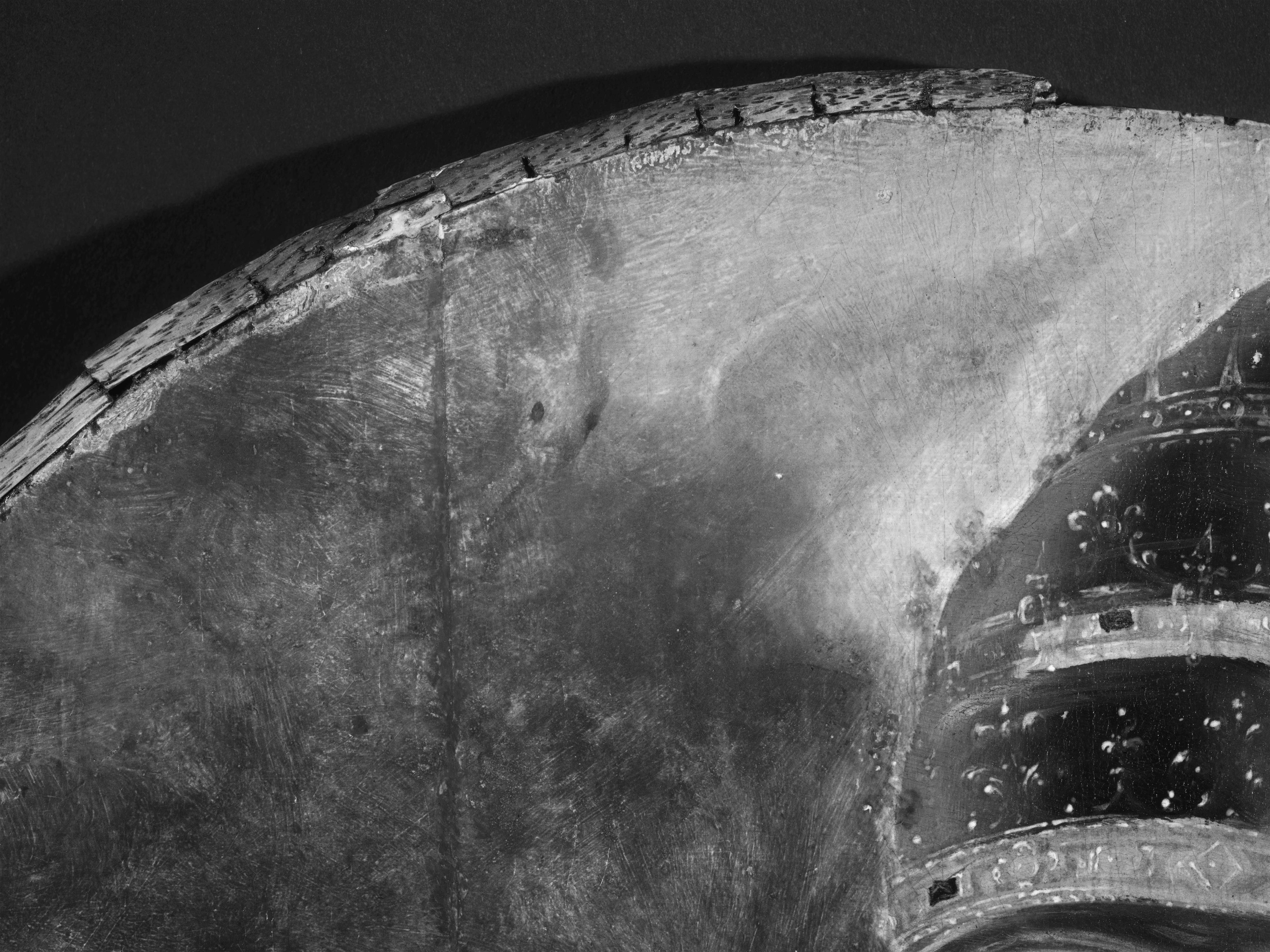Maarten van Heemskerck
The Holy Trinity
Oil on panel. 56 x 40 cm.
The present painting is an important discovery of a composition by the master known from an engraving made by Haarlem engraver Jacob Matham in 1602 (London, The British Museum, inv. 1856-0209.289) which mentions “M. Heemskerck pinxit” (fig. 1). Thanks to Dr. Ilja Veldman, specialized in Van Heemskerck’s œuvre, the panel can be recognized today as the true model for Matham’s engraving. The composition must have been much appreciated as another version of lesser quality exists in the Grzimek collection in Friedrichshafen.
The Holy Trinity constituted a major dogma of the Christian Faith in the medieval society. As such it has been depicted many times by some of the greatest masters north of the Alps in the 15th and 16th centuries, like the Master of Flémalle and Colin de Coter in Flanders, Albrecht Dürer in Southern Germany or Maarten van Heemskerck in the Northern Netherlands.
At first sight only God the Father holding his dead Son on his lap is represented against the golden-brown background. But close examination with infrared light (fig. 2) shows the head and the wing of the Holy Spirit hovering in the upper left space between both figures, a detail which has been overpainted over the time. Stylistically it allows good comparison with doves in other paintings of Van Heemskerck as his “Venus and Cupid” (Cologne, Wallraf-Richartz Museum, inv. no. 875) or “The Triumphant Christ” (Copenhagen, Statens Museum for Kunst).
Dr. Ilia Veldman emphasizes the high quality of the present work. Stylistically, The Holy Trinity corresponds to the working method of the artist in the years 1545-1548 (written communications of 4 August 2019 and 18 February 2022). The 1540s were a particularly fruitful creative period for Heemskerck and his workshop. During this time he created a number of depictions of Christ as the “Man of Sorrows” and the “Lamentation of Christ”. Common to all works is the central figure of the seated Christ in half length, which Heemskerck formulated for the first time in 1532 in the „Man of Sorrows" in the Museum of Fine Arts in Ghent (inv. no. S-53).
The muscular body of Christ is also the defining element in the Trinity. The slightly rotated position of the lifeless Son due to a raised shoulder gives His limp body great tension and presence. Heemskerck's interest in mannerist poses and pronounced muscles, which he got to know while studying in Italy is clearly evident. A Lamentation from around 1545 in the Pinacoteca dell'Accademia Albertina di Belle Arti in Turin is stylistically closely comparable, showing a very similar structure of the body, as does the “Ecce Homo” in Warsaw (Muzeum Narodowe w Warszawie) from 1544. The Man of Sorrows has the same facial type with almost closed eyes, a narrow fleshy mouth, a classically clipped nose and a parted beard.
Similar to Van Heemskerck's Warsaw and Ghent paintings mentioned above, no preparatory underdrawing was found in the present painting. Indeed for the underdrawing Van Heemskerck sometimes used materials that cannot be shown by infrared reflectography (fig. 3).
Provenance
Private collection, Belgium. - Acquired by the grandfather of the present owner. - With a hand-written note on the back of the panel that reads: Don[n]ez Par Me Anna Berlo dit Girardau Décédé dans sette abéie [abbaye] les 12 Doctobre y étant enterer au milieux Du cour dudit Abeie [abbaye] de Teragen [Ter Hage, Ten Hagen ou Terhagen] a Gand lan 1725. R.Q.P.








